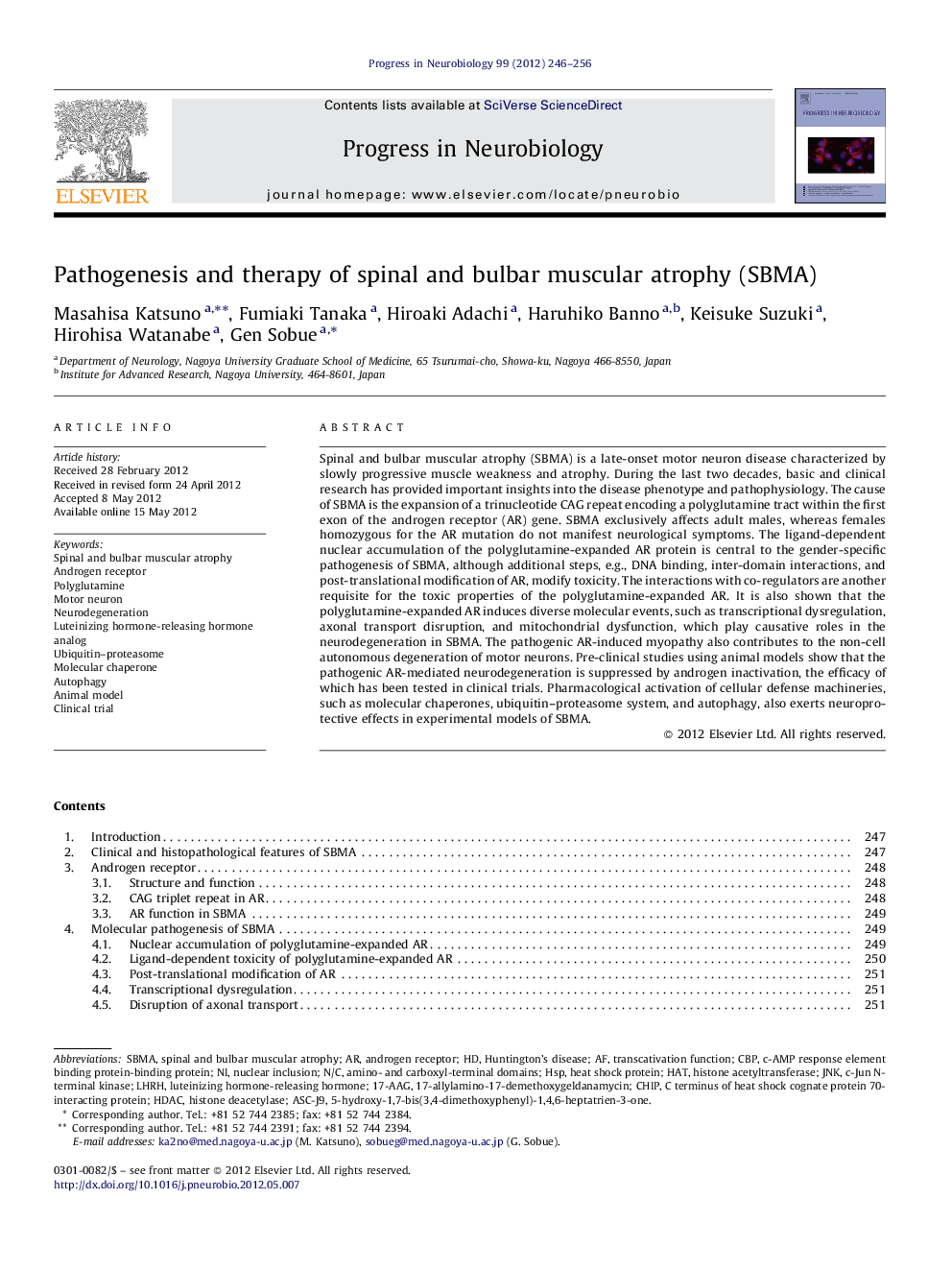| Article ID | Journal | Published Year | Pages | File Type |
|---|---|---|---|---|
| 4353403 | Progress in Neurobiology | 2012 | 11 Pages |
Spinal and bulbar muscular atrophy (SBMA) is a late-onset motor neuron disease characterized by slowly progressive muscle weakness and atrophy. During the last two decades, basic and clinical research has provided important insights into the disease phenotype and pathophysiology. The cause of SBMA is the expansion of a trinucleotide CAG repeat encoding a polyglutamine tract within the first exon of the androgen receptor (AR) gene. SBMA exclusively affects adult males, whereas females homozygous for the AR mutation do not manifest neurological symptoms. The ligand-dependent nuclear accumulation of the polyglutamine-expanded AR protein is central to the gender-specific pathogenesis of SBMA, although additional steps, e.g., DNA binding, inter-domain interactions, and post-translational modification of AR, modify toxicity. The interactions with co-regulators are another requisite for the toxic properties of the polyglutamine-expanded AR. It is also shown that the polyglutamine-expanded AR induces diverse molecular events, such as transcriptional dysregulation, axonal transport disruption, and mitochondrial dysfunction, which play causative roles in the neurodegeneration in SBMA. The pathogenic AR-induced myopathy also contributes to the non-cell autonomous degeneration of motor neurons. Pre-clinical studies using animal models show that the pathogenic AR-mediated neurodegeneration is suppressed by androgen inactivation, the efficacy of which has been tested in clinical trials. Pharmacological activation of cellular defense machineries, such as molecular chaperones, ubiquitin–proteasome system, and autophagy, also exerts neuroprotective effects in experimental models of SBMA.
► SBMA is a motor neuron disease caused by the CAG repeat expansion in AR gene. ► Ligand-dependent nuclear accumulation of the polyglutamine-expanded AR protein is central to the pathogenesis of SBMA. ► Pathogenic AR-mediated neurodegeneration is suppressed by androgen inactivation. ► Protein quality control systems protect neurons from pathogenic AR toxicity.
